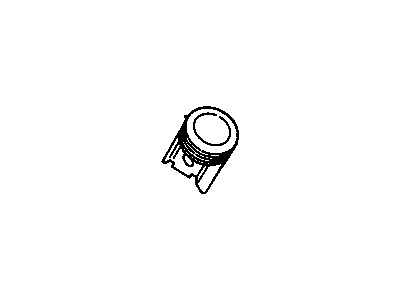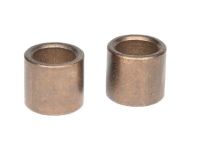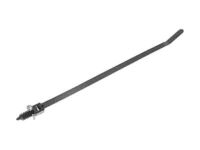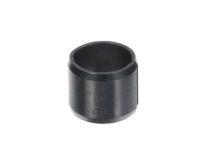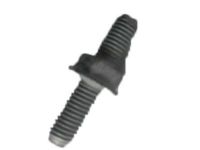Before installing the piston and connecting rod assemblies, ensure the cylinder walls are clean, the top edge of each cylinder is chamfered, and the crankshaft is in place. Remove the connecting rod cap from the number one connecting rod, take out the old bearing inserts, and wipe the bearing surfaces with a clean, lint-free cloth. Clean the back side of the new upper bearing half and lay it in place in the connecting rod, ensuring the tab fits into the recess without hammering or nicking the bearing face, and do not lubricate it at this time. Clean the back side of the other bearing insert and install it in the rod cap, again ensuring the tab fits into the recess without applying lubricant. Position the piston ring gaps properly and slip a section of plastic or rubber hose over the connecting rod cap bolts. Lubricate the piston and rings with clean engine oil, attach a piston ring compressor, and leave the skirt protruding about 1/4-inch to guide the piston into the cylinder. Rotate the crankshaft until the number one connecting rod journal is at bottom dead center, then apply a coat of engine oil to the cylinder walls. With the notch or arrow on top of the piston facing the front of the engine, slip the number one piston/connecting rod assembly into the cylinder bore, resting the bottom edge of the ring compressor on the engine block, and tap the top edge to ensure contact around the circumference. Clean the number one connecting rod journal on the crankshaft and carefully tap the piston into the cylinder while guiding the connecting rod into place on the crankshaft journal, ensuring not to force the piston and checking for any resistance. After installation, check the connecting rod bearing oil clearance before permanently bolting the rod cap in place by laying a piece of Plastigage on the number one connecting rod journal, ensuring it does not cross the oil hole. Clean the connecting rod cap bearing face, remove the protective hoses, install the rod cap, and tighten the nuts to the specified torque without rotating the crankshaft. Remove the rod cap carefully to avoid disturbing the Plastigage and compare the width of the crushed material to the scale on the container to obtain the oil clearance, ensuring it meets specifications. Scrape off any traces of Plastigage, being careful not to scratch the bearing, and apply a uniform layer of moly-base grease or engine assembly lube to both bearing faces. Slide the connecting rod back into place, remove the protective hoses, install the rod cap, and tighten the nuts to the specified torque in three steps. Repeat the procedure for the remaining piston/connecting rod assemblies, keeping all components clean and ensuring the correct piston is used with the notch facing the front of the engine. After all assemblies are installed, rotate the crankshaft by hand to check for binding, and finally, check the connecting rod end play, comparing it to the specified measurement. If using original rods, there should be no change in end play; however, if new rods or a new crankshaft are used, the end play may have changed, necessitating removal for refacing if insufficient or replacement if excessive.
Posted by GMPartsGiant Specialist 
